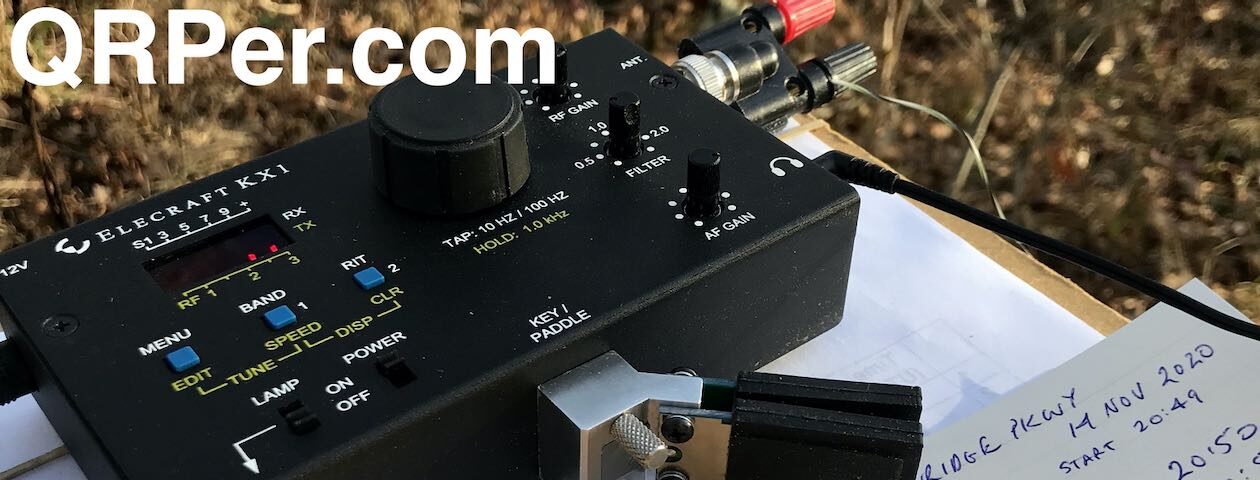Many thanks to Alan (W2AEW) who shares the following guest post:
A self-imposed POTA Park-to-Park Challenge…
by Alan (W2AEW)
One of the things I love about the Parks on the Air program is that every activation is a bit of small challenge. What will the band be like? What antenna will I be able to deploy when I get there? Will I have a spot to setup? Will my CW ‘ear’ be properly tuned up? You get the picture…
There are a few parks that I activate much more than others – call them my “home” parks. These are the ones that are close to my home, easy to get to and setup. One in particular, Washington Rock State Park (K-1635), is certainly the closest. It has some interesting Revolutionary War History.
Not only is this park very close to my home, it also has pretty good elevation (about 500’) for this part of New Jersey. In fact, the local fire department hangs a very large illuminated star during the Christmas season at their building that is adjacent to this park.
 This star can be seen for miles to the South and East of the ridge.
This star can be seen for miles to the South and East of the ridge.
It’s no wonder that I’ve activated this park more than 20 times in the last year and half.
My XYL Nancy was *very* generous to me this year at Christmas – gifting me a new Begali Adventure CW paddle! She even had it engraved with my call:

 I wanted to think of a unique way to celebrate my first POTA activation using this paddle. I would be going to K-1635, so the location would be very familiar. Therefore, I thought of an interesting self-imposed challenge… Attempt to complete an activation with ONLY Park to Park contacts!
I wanted to think of a unique way to celebrate my first POTA activation using this paddle. I would be going to K-1635, so the location would be very familiar. Therefore, I thought of an interesting self-imposed challenge… Attempt to complete an activation with ONLY Park to Park contacts!
As I thought about this, I figured my best chance of success would be to operate on the weekend (significantly more parks are active), and use my most efficient multi-band antenna (a 40m EFHW).
Being an engineer, I’m use to having goals. I’m also used to having additional constraints imposed – let’s call them stretch-goals. Possible stretch goals for this P2P Activation Challenge could be:
- Operate QRP (all of my POTA activations are QRP, so not much of a stretch)
- Operate only CW (nearly all of my activations are CW, and this helps with the QRP goal too)
- Attempt this using a more compromised antenna
- Attempt this during a weekday
It turns out I had a few free hours on Wednesday, December 27, 2023 to play radio… It was kind of a dismal day weather-wise. I figured it might be the day to attempt this challenge. The wet weather had me thinking that I’d setup my SuperAntenna MP1 vertical instead of using the 40m EFHW (and having it and the throw line get all wet and muddy). The stage was set for the challenge including the stretch goals.
I setup the MP1 on the bedrail of my truck, using an MFJ-1976 ten-foot whip on top.
 The band conditions were in pretty good shape, so I figured I had a shot. I setup the rig inside the truck because of the rain, and got the iPad going with the POTA spotting page to see who I could hunt. I logged four P2P contacts in the first 20 minutes, so there was hope!
The band conditions were in pretty good shape, so I figured I had a shot. I setup the rig inside the truck because of the rain, and got the iPad going with the POTA spotting page to see who I could hunt. I logged four P2P contacts in the first 20 minutes, so there was hope!
In the end, it took about 90 minutes to log 11 Park-to-Park contacts. Well, actually 12, since one of them turned out to be a two-fer. I logged a few “familiar” activators, including Teri KO4WFP – a frequent contributor of Field Reports here, and Jonathan KM4CFT – running a two-fer out of North Carolina. There were a few that I noted in my paper log because I had a good copy on them, but ultimately couldn’t bust thru the pile ups there were getting (like K7SHR at K-10946 in WY and K0YY at K-4416 in TX).
A personal thanks to all of the activators in my log that helped me reach my P2P Challenge:
- KL7NL at K-6945 in NC
- KM4CFT at K-8313 and K-3378 in NC
- WD4AWD at K-2982 in TN
- KU8T at K-4208 in IN
- KO4WFP at K-0659 in FL
- W0ABE at K-10532 in CO
- N4XTT at K-2982 in TN
- NM1L at K-7475 in FL
- KC1BDJ at K-7879 in FL
- KI5GBQ at K-7687 in OK
- NS1C at K-2420 in MA
All contacts were on 20m with the exception of NS1C on 40m. All were CW.
This was a fun little challenge, one that I hope to repeat in the future. Hope to see you all on the air – POTA-ON!
72 de W2AEW





























































